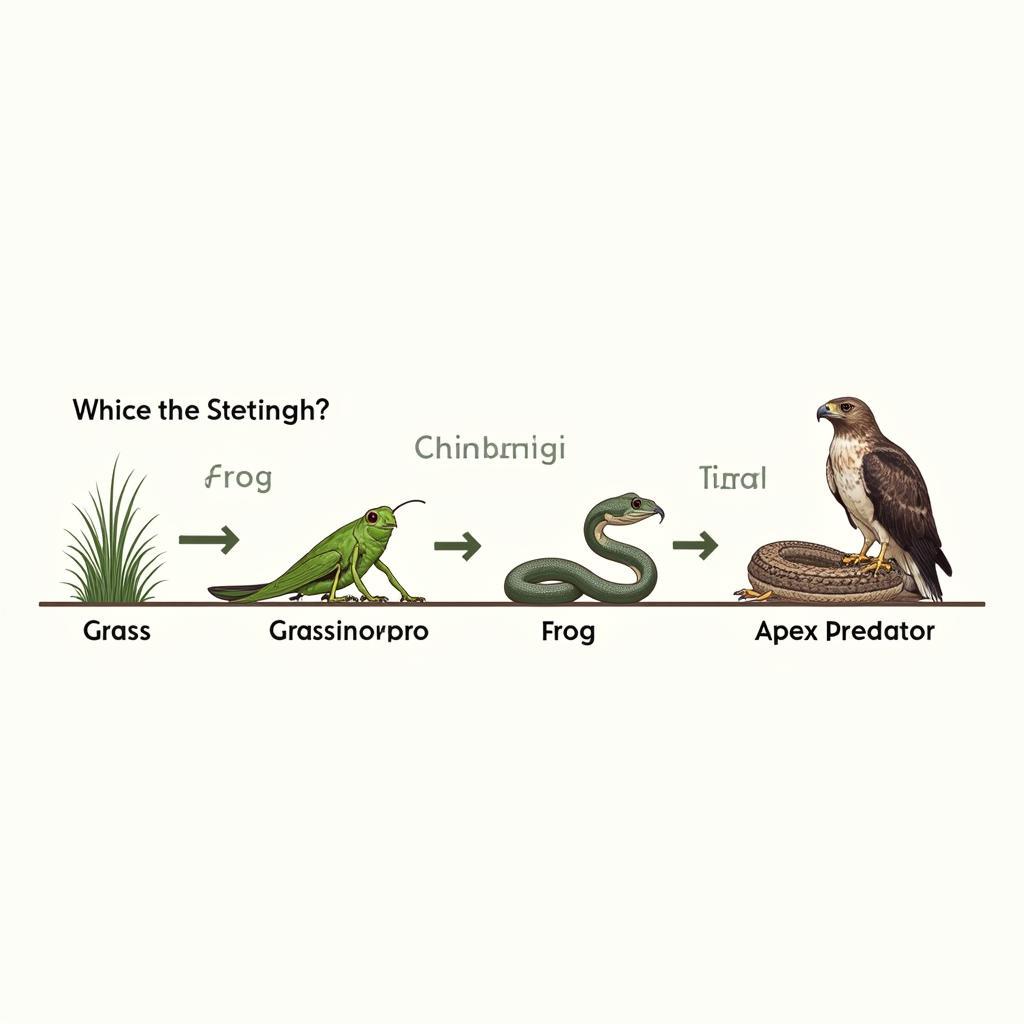Food chains and webs are fascinating concepts that dictate what ends up on our dinner plates. Understanding these intricate relationships between organisms helps us appreciate the complexity of our food systems and the importance of maintaining ecological balance. From the humble garden salad to a succulent steak, every meal tells a story of interconnectedness within the natural world.
Decoding the Dinner Plate: Food Chains and Webs Explained
Food chains and food webs illustrate the flow of energy through an ecosystem. A food chain represents a linear sequence of organisms, where each one serves as a food source for the next. Imagine a simple chain: grass, grasshopper, frog, snake, hawk. The grass, a producer, converts sunlight into energy. The grasshopper, a primary consumer, eats the grass. The frog, a secondary consumer, eats the grasshopper. The snake, a tertiary consumer, eats the frog. Finally, the hawk, a quaternary consumer or apex predator, eats the snake.
Food webs, on the other hand, are more complex and realistic depictions of feeding relationships. They show how multiple food chains intertwine and overlap. A creature might be part of several different food chains simultaneously. For instance, a hawk might also prey on mice, which eat seeds, creating another link in the web. This interwoven nature of food webs highlights the interdependence of species within an ecosystem.
 Food Chain in a Terrestrial Ecosystem
Food Chain in a Terrestrial Ecosystem
What’s on the Menu? Exploring Different Food Chains
Different environments host diverse food chains and webs. In a marine ecosystem, phytoplankton, microscopic algae, form the base of the food chain. They are consumed by zooplankton, tiny animals, which are then eaten by small fish. These small fish become prey for larger fish, which can then be eaten by top predators like sharks or dolphins.
Terrestrial ecosystems, like forests and grasslands, have their own unique food chains. Plants form the foundation, followed by herbivores like deer or rabbits. Carnivores like wolves or lions then prey on the herbivores. Even deserts, with their seemingly harsh conditions, support complex food webs. Insects and reptiles form the base, with larger predators like foxes or owls at the top.
 Food Web in a Marine Environment
Food Web in a Marine Environment
Human Impact on Food Chains and Webs: What’s for Dinner in the Future?
Human activities significantly impact food chains and webs. Overfishing can deplete fish populations, disrupting the delicate balance of marine ecosystems. Habitat destruction can displace animals, forcing them to compete for limited resources and potentially leading to population declines. Pollution can contaminate food sources, affecting organisms at all trophic levels.
Understanding the impact of our actions on these intricate systems is crucial for ensuring sustainable food sources for future generations. What we choose to have for dinner is not just a personal preference, but a decision that has far-reaching consequences for the planet.
Why Should We Care About Food Chains and Webs?
Simply put, food chains and webs are the foundation of life on Earth. They regulate populations, maintain biodiversity, and ensure the flow of energy through ecosystems. By understanding these complex relationships, we can make informed choices about our food consumption and contribute to a healthier planet.
 Human Impact on Food Chains
Human Impact on Food Chains
Conclusion: Food Chains and Webs – The Foundation of Our Meals
Food chains and webs are not just abstract scientific concepts; they are the intricate systems that determine what’s for dinner, tonight and every night. Understanding their complexity and the impact of human activities is crucial for preserving the delicate balance of our planet and ensuring food security for future generations. So, the next time you sit down for a meal, take a moment to appreciate the interconnectedness of life and the role food chains and webs play in bringing food to your table.
FAQ
- What is the difference between a food chain and a food web? A food chain is a linear sequence of organisms, while a food web shows interconnected food chains.
- What is an apex predator? An apex predator is at the top of the food chain, with no natural predators.
- How do humans impact food chains? Overfishing, habitat destruction, and pollution are examples of human impact.
- Why are food webs important? They maintain biodiversity and regulate populations.
- What is a producer in a food chain? A producer, like a plant, converts sunlight into energy.
- What is a consumer in a food chain? A consumer obtains energy by eating other organisms.
- What is an example of a food chain? Grass -> Grasshopper -> Frog -> Snake -> Hawk
For any assistance or inquiries, please contact us at Phone: 02437655121, Email: [email protected] or visit our location at 3PGH+8R9, ĐT70A, thôn Trung, Bắc Từ Liêm, Hà Nội, Việt Nam. We have a 24/7 customer service team.